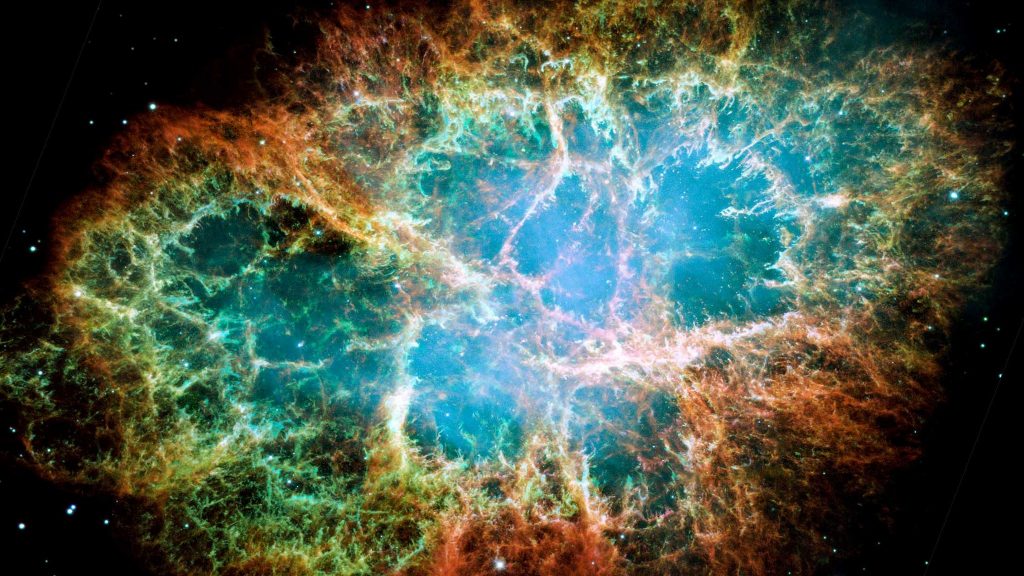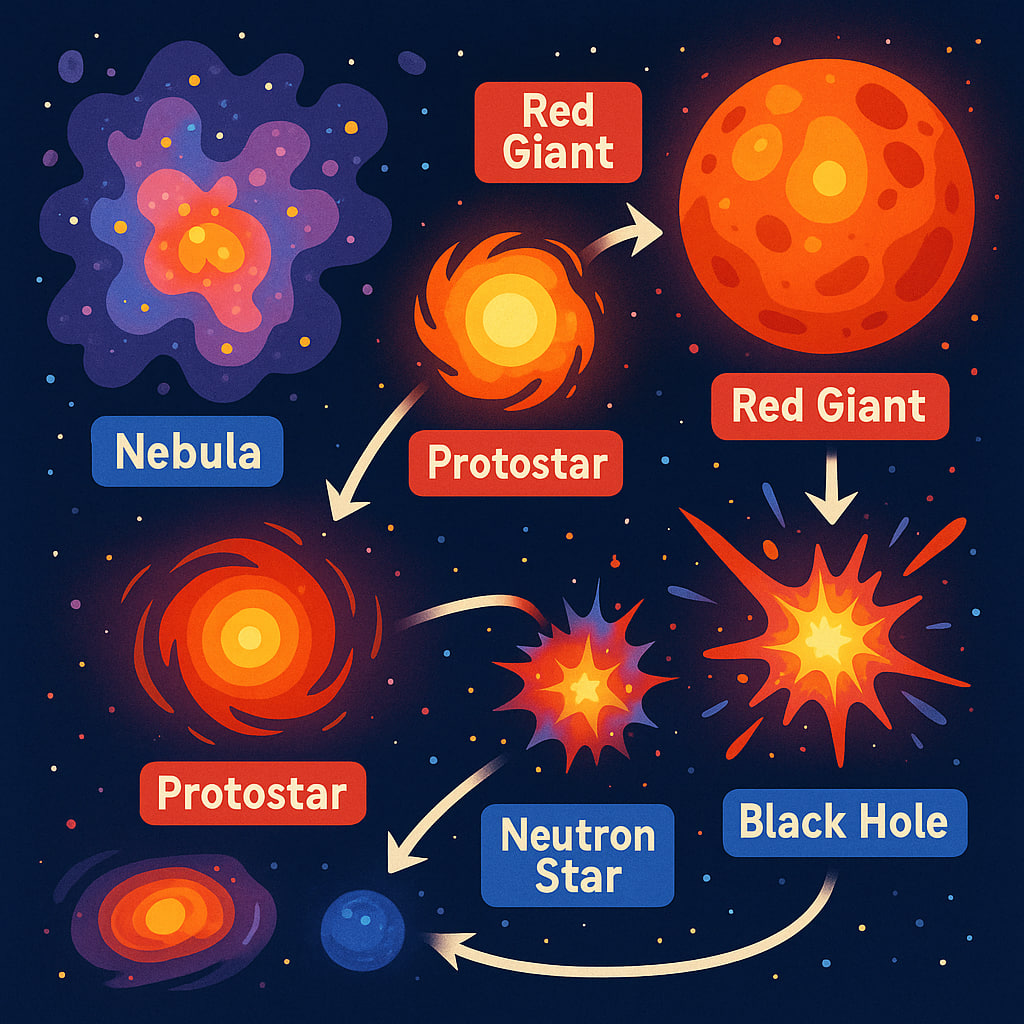Stars are among the most fascinating and fundamental objects in the universe. They light up galaxies, forge the elements of life, and create some of the most powerful events in existence. But every star — including our Sun — has a beginning, a lifetime, and an end.
In this article, we’ll explore the life cycle of stars, how they are born, what determines how long they live, and the spectacular ways in which they die.
How Stars Are Born
Stars are born inside vast clouds of gas and dust called nebulae. These regions are cold and dense, and gravity eventually pulls the material inward.
The steps of star formation:
- Gravitational collapse – The cloud fragments and contracts.
- Protostar phase – A hot core forms, not yet shining but growing.
- Nuclear fusion begins – When the temperature reaches ~10 million°C, hydrogen atoms fuse into helium, releasing energy — and a new star is born.
Stars “turn on” and shine when fusion begins in their cores. From this point, they enter the main sequence phase, which is where they spend most of their lives.
How Long Do Stars Live?
The lifespan of a star depends on one thing: its mass.
| Star Type | Mass (vs. Sun) | Lifespan |
|---|---|---|
| Massive stars | > 10× Sun | Few million years |
| Sun-like stars | ≈ 1× Sun | ~10 billion years |
| Red dwarfs | < 0.5× Sun | Hundreds of billions of years (still alive!) |
Strangely, the bigger the star, the shorter it lives — because massive stars burn through their fuel incredibly fast.
How Stars Die
Low-mass stars (like the Sun)
- They swell into red giants, then shed outer layers.
- The core becomes a white dwarf, a hot, dense stellar ember.
- Eventually, it cools to a black dwarf — a dead, invisible remnant (though none exist yet; the universe isn’t old enough).
Massive stars
- They explode as supernovae — among the most powerful events in the cosmos.
- The core either:
- Collapses into a neutron star (extremely dense)
- Or, if massive enough, forms a black hole
These deaths seed the universe with heavy elements like gold, iron, and uranium — essential for life and planets.
The Stellar Afterlife: What’s Left Behind?
- White Dwarfs – Earth-sized, glowing hot, slowly fading.
- Neutron Stars – City-sized objects with the mass of a Sun, spinning rapidly.
- Black Holes – So dense not even light escapes. They зкщ warp space and time.
Some dead stars even form binary systems, collide, or emit gravitational waves detectable here on Earth.
Crab Nebula, M1 – NASA / ESA / Hubble Space Telescope

Key Terms Explained
- Nebula – A vast cloud of gas and dust where stars are born.
- Nuclear Fusion – The process of combining atoms to release energy — it powers stars.
- Main Sequence – The stable “adult” life stage of a star.
- Supernova – A powerful explosion at the end of a massive star’s life.
- White Dwarf / Neutron Star / Black Hole – Possible end states depending on the star’s mass.
Final Thoughts
Every star in the night sky is on a journey — from birth in a nebula to a quiet fade or a cataclysmic end. Even the Sun, serene as it seems, is burning through its life one fusion reaction at a time.
Understanding stars helps us understand our past, our future, and our place in the universe.


